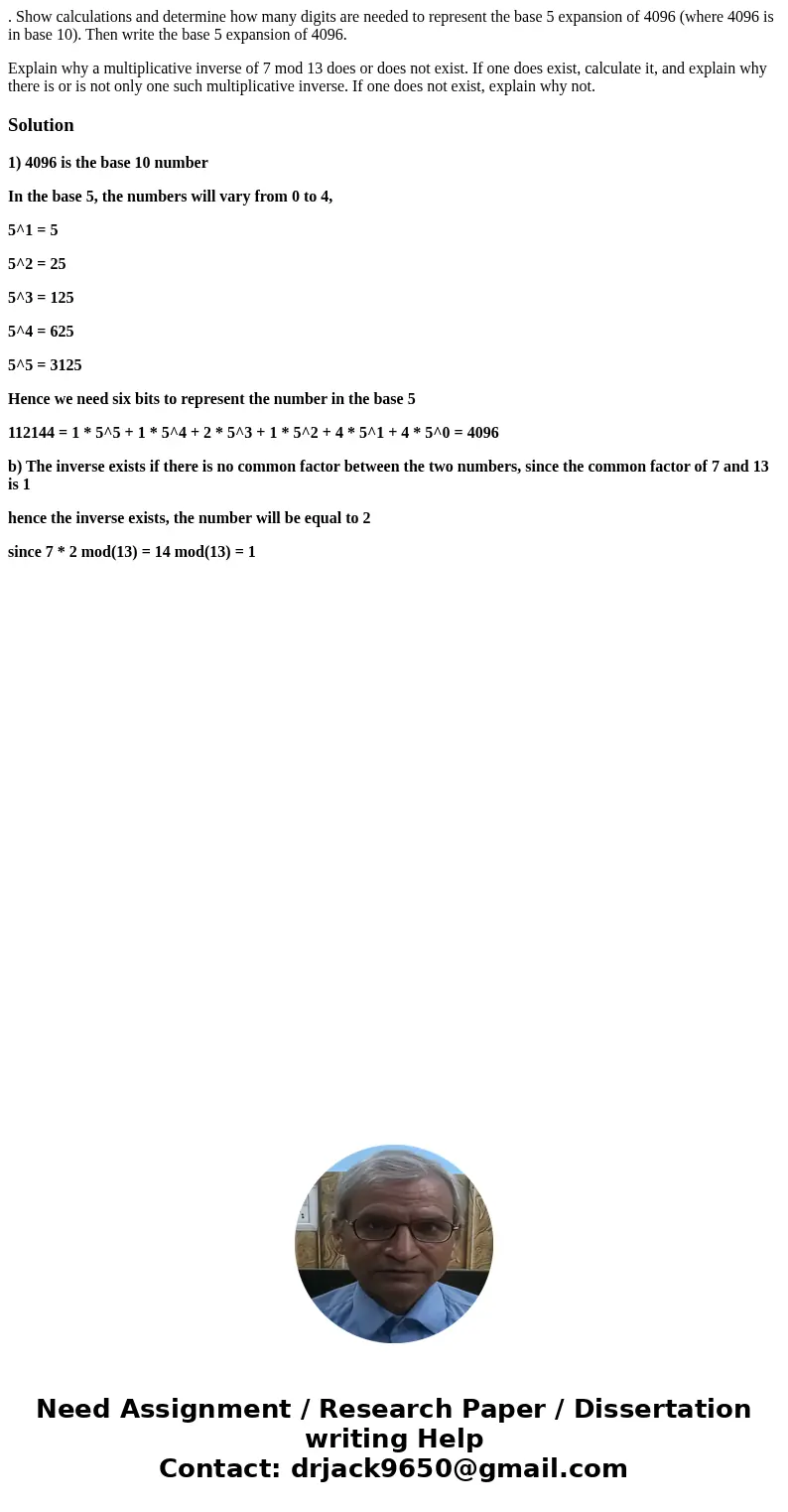Show calculations and determine how many digits are needed
. Show calculations and determine how many digits are needed to represent the base 5 expansion of 4096 (where 4096 is in base 10). Then write the base 5 expansion of 4096.
Explain why a multiplicative inverse of 7 mod 13 does or does not exist. If one does exist, calculate it, and explain why there is or is not only one such multiplicative inverse. If one does not exist, explain why not.
Solution
1) 4096 is the base 10 number
In the base 5, the numbers will vary from 0 to 4,
5^1 = 5
5^2 = 25
5^3 = 125
5^4 = 625
5^5 = 3125
Hence we need six bits to represent the number in the base 5
112144 = 1 * 5^5 + 1 * 5^4 + 2 * 5^3 + 1 * 5^2 + 4 * 5^1 + 4 * 5^0 = 4096
b) The inverse exists if there is no common factor between the two numbers, since the common factor of 7 and 13 is 1
hence the inverse exists, the number will be equal to 2
since 7 * 2 mod(13) = 14 mod(13) = 1

 Homework Sourse
Homework Sourse